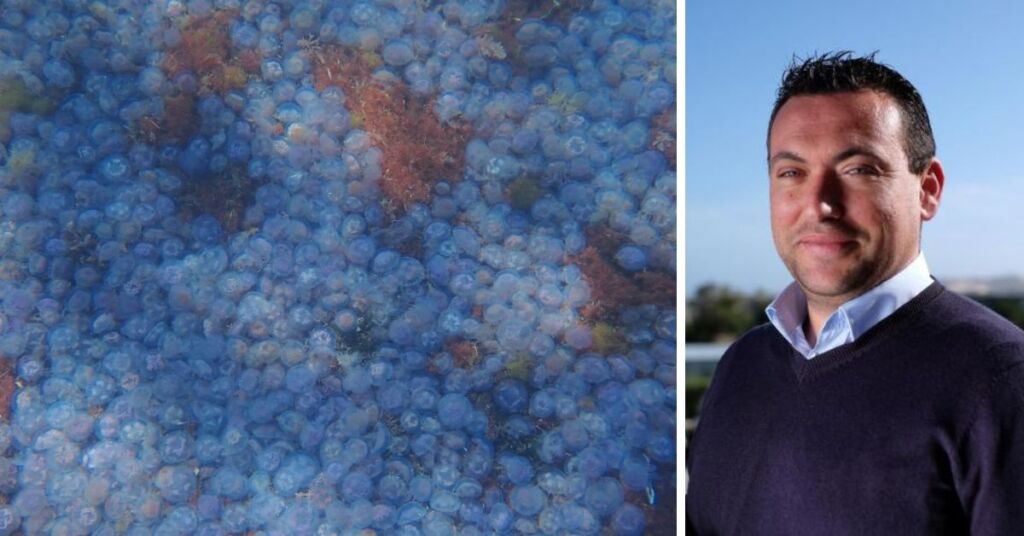Alan Deidun Explains: Carpet Of Idle Jellyfish Covers Golden Bay Seabed As Mauve Stinger Swarm Continues

A carpet of jellyfish has completely covered the seabed at Golden Bay, as an ongoing swarm of Mauve Stingers continues around the islands.
Malta is currently experiencing a second bloom of Mauve Stingers, following a first wave experienced last December.
Photos shared by local marine biologist Alan Deidun show hundreds, if not thousands, of purple jellyfish all laying idly on the seabed.
Speaking with Lovin Malta, Deidun explained how the large numbers of mauve stingers observed along the seabed are probably related to buoyancy.
“Large numbers of mauve stingers have been observed on the seabed in recent days at Golden Bay and this is probably related to buoyancy issues, in that the mauve stinger is one of the few jellyfish species capable of considerable vertical movements in the water column.”
“They are capable of controlling their buoyancy and position in the water column through the inclusion of air bubbles and through vigorous pulsating movements.”
“Surface currents in the area might be such that the species is aggregating on the seabed so as to avoid beaching; alternatively, bottom currents in the same area might be responsible for the jellyfish accumulating within depressions on the seabed.”
However, he said that only measurements of water currents on site could shed more light on the issue.
Speaking in-depth about the current bloom, he explained how it is especially pronounced along the western coast of Malta, notably Ġnejna, Golden Bay, and Dwejra in Gozo.
It has also been observed in more offshore areas, such as Hurd’s Bank, which is situated roughly 12 nautical miles off the eastern coast of Malta.
“The mauve stinger bloom in question consists of small jellyfish, generally considered to be sub-adults which putatively are the result of the massive egg-laying (spawning) event we observed last December by the same species.”
“The fact that December and most of January were so unseasonally calm and warm might be responsible for the relatively early appearance of this new generation of mauve stingers this year, as normally these annual blooms appear in early spring.”
Explaining how this might spell good news for bathers, as blooms do not normally last more than a few months, Deidun insisted that caution still needs to be practiced here.
“They are many variables which compound our understanding of these simple, but at the same time, complex creatures.”
Mauve stingers are not the only common jellyfish species at this time of year in our waters – the Spot the Jellyfish campaign has received numerous reports of delicate siphonophore and salp colonies from numerous citizen scientists.
The former is a dangerous, stinging creature, belonging to the same group as the Portuguese Man O’War whilst salps are innocuous water filters that are important in the cycling of nutrients within marine ecosystems.
Tag someone that needs to know more about this jellyfish bloom
